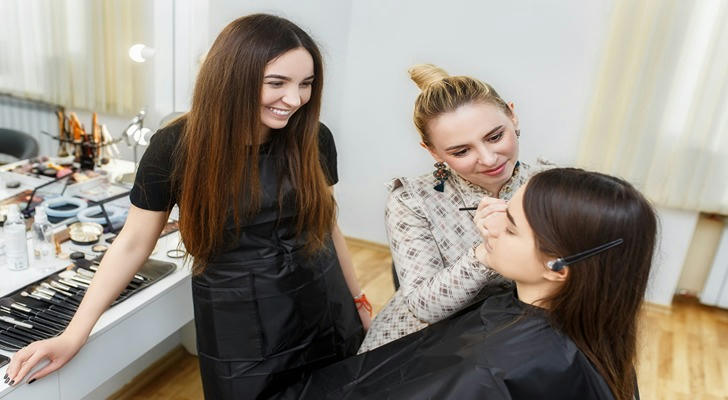Interests take root, profession shines: the struggle of hairdressing students
Behind every professional hairdresser, there is almost an unknown growth process. Some people planted the seeds of interest because of a satisfactory hair experience; some people liked to comb their friends' hair since childhood, and gradually found their own direction in interest.

Ⅰ. The budding of interest: It started with a comb
The protagonist of this article, Amy, is a 26-year-old young woman from Chicago. When she was a teenager, she often braided and styled her sisters and friends' hair. Whenever there was a family gathering, she was always the first to pick up the comb.
"I never seriously thought about this as a career, I just felt that I liked to make other people's hair beautiful." Amy recalled.
In high school, she even often helped classmates do prom hairstyles. Although she had no professional training, her skills and beauty often won praise.
"The curls she made for me were more natural than those in the salon outside," a classmate commented afterwards.
This passion derived from interest did not fade after graduating from college. On the contrary, facing the pressure of the workplace and the confusion of life, Amy began to think seriously: Can I develop my interest into a career?
Ⅱ. Entering the professional road: entering the hairdressing classroom for the first time
Amy signed up for a local hairdressing training program. At first, she was not sure if she could do it.
"I have never learned professional theory, and I don't know how to use scissors. On the first day of class, I didn't even know how to hold the scissors correctly."
But what makes her feel at ease is that the course setting is very suitable for beginners. From washing and care knowledge to basic hair cutting skills, to color theory and styling design, the content is progressive, allowing her to build confidence step by step.
In class, she was particularly interested in the hair dyeing module. Through training in color matching, coloring, and time control, she gradually discovered that she not only likes styling, but also has a keen sense of color matching.
"I used to dye my hair based on my feelings, but now I can adjust the color according to skin color, hair quality, and even lighting effects. This feeling is great."
What she likes most is the sense of accomplishment of seeing the customer's satisfied expression after completing a hairstyle. "That smile is what attracts me most about this industry."

Ⅲ. From student to salon internship: the first real customer service experience
After completing the core course, Amy entered a community salon in Chicago to start practical work. Although she already had a certain technical foundation, she was still nervous when facing real customers.
When she cut hair for a customer for the first time, her palms were sweating almost the whole time.
"The customer was a young girl who wanted a short haircut. I recalled the steps in class and confirmed with the teacher."
Although the process was a little slow, the final result was recognized. The customer was not only not dissatisfied, but praised her for her carefulness and meticulousness.
This experience became an important turning point for Amy. She realized that she was no longer the person who could only "play with hair" at home, but a hairdresser who could provide professional services.
Ⅳ. Continuous growth: portfolio and personal style building
With the improvement of technology, Amy began to record every work. She used social media to post her styling photos, from simple haircuts to complex dyeing and perming styles, and every practice became a witness to her growth.
Gradually, some young customers in the community took the initiative to find her, hoping that she could help design holiday styles, wedding hairstyles and even fashionable hair dyeing.
Amy began to form her own aesthetic style: focusing on natural lines, being good at soft transitional colors, and attaching importance to the communication experience with customers.
"I learned not only to do it, but also to listen to the needs of customers. Sometimes, a little listening can determine the quality of a hairstyle."
She has more and more customers, and many of them said, "I feel like she is helping me with my hair like a friend."

Ⅴ. Amy today: stable work and future plans
Currently, Amy is already a formal stylist in the salon, with regular customer appointments every week. Her daily work schedule is reasonable, and she can balance her life and interests.
More importantly, this job brings her inner satisfaction.
"I never thought that my interest could become a stable career. This is not accidental, I really worked hard."
She plans to take more advanced courses in the future to improve her skills in hair cutting and color direction, and hopes to open her own styling studio one day.
She also hopes that her experience can encourage more people, "If you really like it, you might as well give it a try. Don't give up just because you are not professional at the beginning."
Entering the hairdressing industry is not just for skills, but also a way to realize self-worth and express beauty. As long as you are willing to invest passion and time, this road will take you further and more freely.
